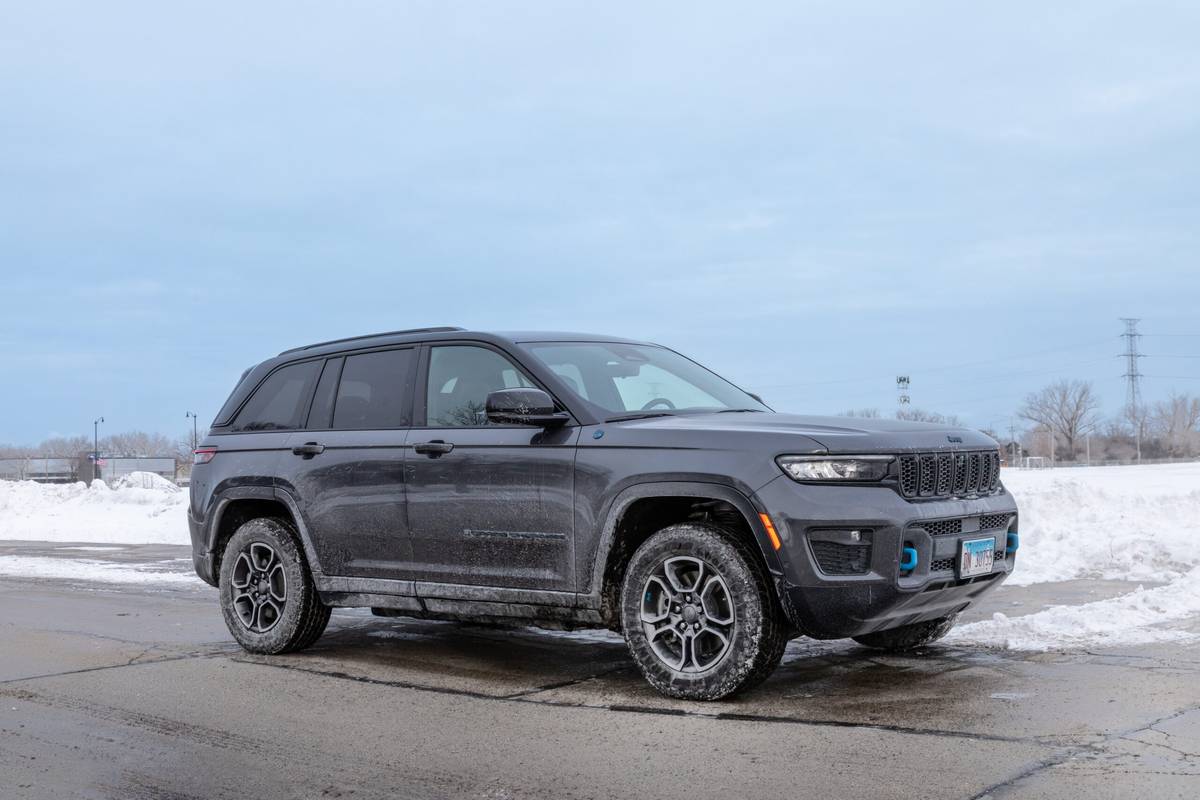The Morning Call and Mcall.com's view
Driving the Chrysler Fifth Avenue is like walking into a room full of old friends. There may be no stimulating surprises but there is no fear of the unknown, either. It is the type of car ”they used to build,” and after driving it awhile you begin to realize it really wasn’t a bad idea at that.
The Fifth Avenue isn’t exactly an anachronism, but it won’t be much longer until it is. As things stand, it is the last of the rear-wheel drive Chryslers. Although Chrysler can’t take credit for inventing front-wheel drive, it certainly didn’t waste any time converting to it. And this corporation certainly didn’t waste any time getting rid of its big cars when the public decided it wanted smaller cars.
However, Chrysler wisely held onto one six-passenger conventional type; perhaps with the foresight that the public is very fickle and an ace in the hole might pay off later. But somehow I sort of doubt this. I think the Fifth Avenue was just overlooked in the haste to go to smaller front-wheel drive cars. But the reasons really don’t matter. The Fifth Avenue is still with us and that could make a number of buyers happy.
The test car (supplied by Rothrock Chrysler-Plymouth, Route 22 and 15th St.) was an attractive looking car in that sort of ageless, linear four-door sedan styling. It was loaded with all kinds of luxury features, which really wasn’t surprising since it is a luxury car. Perhaps its most attractive feature is its price. Chrysler claims it is the best luxury car value in America and I’m not going to argue this point. But, more about the price later.
Although a big car by today’s standards, the Fifth Avenue is not the full- sized New Yorker of the late Seventies. Rather, with a volume index of 114 cubic feet, it is an intermediate. Until 1983 it was known as the New Yorker Fifth Avenue Edition, but it lost the first part of its name when Chrysler brought out its front-wheel drive New Yorker as an ’83 1/2 model.
To get down to sizes, the Fifth Avenue’s wheelbase is 112.7 inches; overall length, 206.7 inches; width, 74.2 inches; height, 55.3 inches, and curb weight, 3,740 pounds. Head room is exceptionally good and leg room is a generous 42.5 inches up front and 37 inches in the rear. It is a six-passenger car and six average-size adults can be seated in cozy comfort. However, it would be better for all if the middle passengers in the front and rear were children. The Fifth Avenue has the typical rear-wheel-drive high transmission hump up front and driveshaft tunnel in the rear. It is neither better nor worse than similar models. But the transmission hump does look exceptionally big compared with the front-wheel drive Chryslers.
With all of its power equipment and automatic transmission, the Fifth Avenue is an absolute snap to drive. Just drop it in gear, aim it somewhere in the general direction you want to go and you are on your way. Steerin g is very predictable and there is enough built-in play in the wheel so you don’t have to worry about drifting over the road if you happen to get a little sloppy with your driving. In an age of sloping hoods, the Fifth Avenue’s straightforward hood does look exceptionally long, but just keep an eye on the hood ornament to judge distance. Instruments are those big old gauges we are so familiar with. No electronics here. All driving controls are on steering column stalks and simple to use. The lights switch is still the dash-mounted push-pull type.
The Fifth Avenue’s suspension is another well-tested feature. Up front are transverse torsion bars, while chromium alloy leaf springs hold up the rear. This suspension may not be state-of-the-art but it certainly is more than adequate to do the job and it is possibly the strongest suspension system available. I mean, it’s bulletproof. It is tuned on the soft side for a smooth ride, but it can handle the curves and c overleafs when it is pushed into t hem; though I really don’t think the average Fifth Avenue buyer will be worried about running the back roads.
Supplying the power to the Fifth Avenue is the rugged, reliable, renowned and remarkable 318 V-8. This engine has been around for a number of years and has powered numerous Chryslers, Dodges, Plymouths, pick-ups, four-wheelers, vans, motor-homes, racing cars and boats. It is one of the All-American classic short-stroke, overhead valve V-8s that was the mainstay of the industry until the fuel crunch (or, perhaps more accurately, the great gasoline price increase). There really has never been anything like the American V-8 for horsepower for the buck. The V-8 has been replaced by fours and V-Sixes these past couple of years but American automakers, thankfully, still have a couple of the big guys left.
The Fifth Avenue’s 318 V-8 (5.2 liter) is mildly tuned and combines a good balance of performance and fuel economy. It has a two-barrel carburetor and is rated at 144 horsepower at 3,600 rpm and 265 foot pounds torque at 1,600 rpm. According to Chrysler, improvements this year result in an 8 percent fuel economy gain. This is the result of increasing the compression ratio (now 9.0:1), new valve shrouding inside the combustion chamber and using roller camshaft bearings to reduce friction.
At 144 horsepower, the 318 V-8 produces two fewer horses than Chrysler’s turbocharged 135 cubic inch (2.2 liter). This at first may appear to make it a bit doggy; after all here’s an engine less than half its size putting out more horsepower. But let’s look into this. For starters, the V-8 gets its full horsepower at 3,600 rpm while the turbo four has to wind up to 5,200 rpm for its 146 horses. But the big difference is in torque. As mentioned, the 318 V-8 has 265 foot pounds torque at 1,600 rpm. The turbo four produces 168 foot pounds at 3,600 rpm, far less torque and at far higher rpm. As you may or may not know, it is torque that does the heavy moving. High torque at low rpm (such as produced by a V-8) means an engine can get up to full power very fast. Does this mean the V-8 is a better engine than the turbo four? No. It just means there are different ways of doing different things, and the V-8 is perfectly suitable for its job of moving the Fifth Avenue.
The engine is matched to a three-speed TorqueFlite automatic (still another old friend). This transmission is obviously geared for highway fuel mileage since it picks up speed before you know it and it has no, or very little, holdback. You go down a hill, you put the brakes on. The test car did get good fuel mileage for a V-8. It averaged 15 mpg for city driving and 23 mpg for highway driving.
Base price for the Fifth Avenue is $14,205. For this, you get a lot of luxury, trim and convenience items and a whole bunch of standard equipment including: the 318 V-8 and TorqueFlite transmi ssion, air conditioning, power brakes, power steering, rear window defroster, tinted glass, halogen headlamps, dual remote control outside mirrors, power windows, P205/75R15 steel-belted radials and padded landau top. Full price on the test car was $15,289 and included a destination charge of $475 and the following options: protection group, $127; deluxe windshield wipers, $53; power door locks, $175; power decklid release, $40; power driver’s seat, $215; speed control, $179; AM-FM stereo, $125 (an AM with clock comes as standard equipment); power antenna, $60, and tilt steering column, $110.
Latest news



